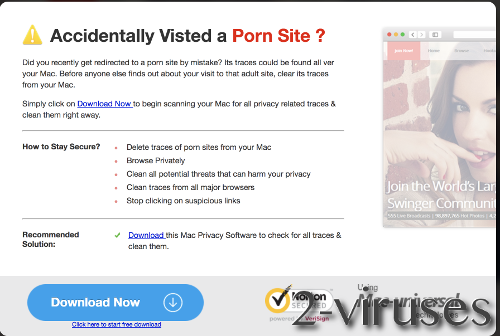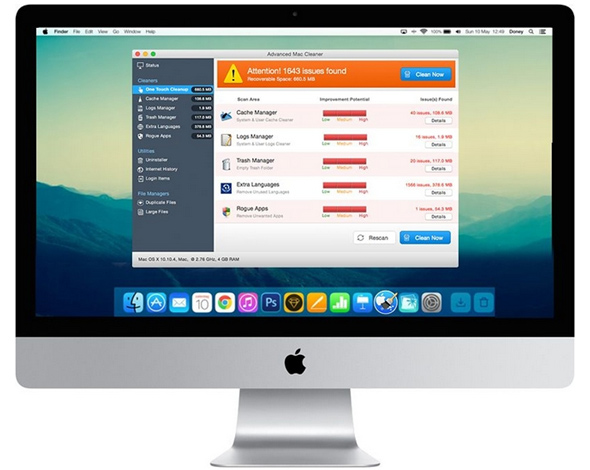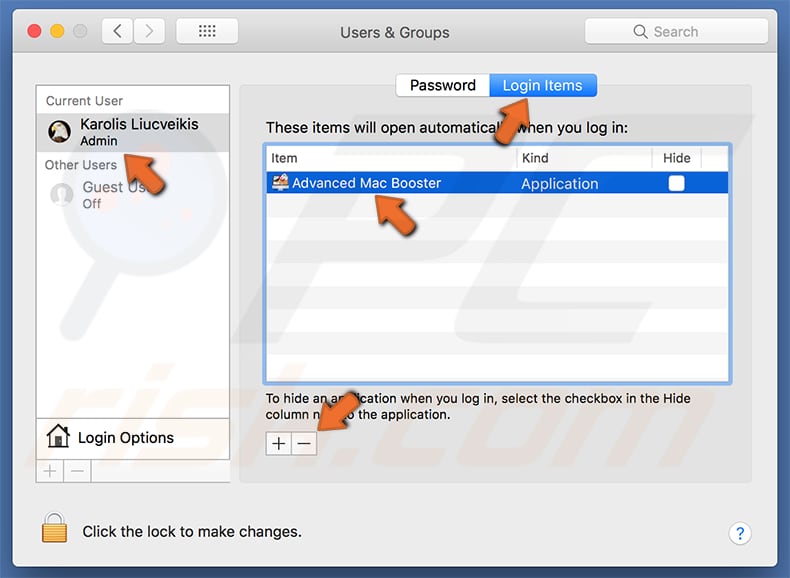Get Rid Of Advanced Mac Cleaner App
Oct 30, 2018 What is Advanced Mac Cleaner IT security specialists has determined that Advanced Mac Cleaner is a potentially unwanted program (PUP), already at the first sight of which there are various doubts. It’s named “Advanced Mac Cleaner” claims to help users remove unnecessary apps, clean disks, find and remove duplicate and junk files.
Pop-ups can be ads, notices, offers, or alerts that open in your current browser window, in a new window, or in another tab. Some pop-ups are third-party ads that use phishing tactics—like warnings or prizes—to trick you into believing they’re from Apple or another trusted company, so you’ll share personal or financial information. Or they might claim to offer free downloads, software updates, or plugins, to try to trick you into installing unwanted software.
- Then, continue to the Applications folder and search for Advanced Mac Cleaner. Drag the app to the Trash section and empty the Trash. Afterward, go to the Apple menu and click on System Preferences. Select the Users & Groups option. Get rid of programs with only one click.
- Apr 17, 2019 The internet is full of apps similar to Mac Speedup Pro, such as Advanced Mac Cleaner, Mac Cleanup Pro, MacOptimizer, Mac-Mechanic, and many more.Typically, they are promoted as 'useful applications' capable of providing various features - in this case, system optimization tools.
Unless you’re confident of an ad’s legitimacy, you should avoid interacting with pop-ups or webpages that seem to take over your screen. Here are additional tips that can help you manage pop-ups and other unwanted interruptions.
Check and update your software
Always make sure you install the latest software updates for all your Apple products. Many software releases have important security updates and may include improvements that help control pop-ups.
The safest place to download apps for your Mac is the App Store. If you need third-party software for your Mac, and it isn’t available in the App Store, get it directly from the developer or another reliable source, rather than through an ad or link.

Check Safari settings and security preferences
Make sure Safari security settings are turned on, particularly Block Pop-ups—for pop-up windows—and the Fraudulent Website Warning.
On your iPhone, iPad, or iPod touch, go to Settings > Safari and turn on Block Pop-ups and Fraudulent Website Warning.
On your Mac, you can find these options in Safari > Preferences. The Websites tab includes options to block some or all pop-up windows, and you can turn on fraudulent site warnings in the Security tab.
Pop-ups and ads in Safari
If you see an annoying pop-up ad in Safari, you can go to the Search field and enter a new URL or search term to browse to a new site. If you don’t see the Search field on your iPhone, iPad, or iPod touch, tap the top of the screen to make it appear.
Some pop-ups and ads have fake buttons that resemble the close button, so use caution if you try to close a pop-up or ad. If you're unsure, avoid interacting with the pop-up or ad and close the Safari window or tab.
On your Mac, you can also update your settings to prevent windows from opening again after you close Safari, or just press and hold the Shift key when you open Safari.
If you might have installed adware or other unwanted software on your Mac
If you see pop-ups on your Mac that just won’t go away, you might have inadvertently downloaded and installed adware (advertising-supported software) or other unwanted software. Certain third-party download sites might include programs that you don’t want with the software that you install.
If you think that you might have malware or adware on your Mac, update to the latest version of macOS. If your Mac is already running the latest version, restart it. macOS includes a built-in tool that removes known malware when you restart your Mac.
Check your Applications folder to see if you have any apps that you didn’t expect and uninstall them. You can also check the Extensions tab in Safari preferences to check if you installed any unnecessary extensions that you'd prefer to turn off. If you continue to see advertising or other unwanted programs on your Mac, contact Apple.
Learn more
- How to safely open software on your Mac
- How to recognize and avoid phishing and other scams
How to remove 'Mac Speedup Pro' from Mac?
What is 'Mac Speedup Pro'?
Developers promote Mac Speedup Pro (also known as MacSpeedup Pro or Mac~Speedup~Pro) as an app that enhances Mac computer performance by allowing users to scan for various issues. Generally, this app is offered as an optimization-oriented app, however, it is also categorized as a potentially unwanted application (PUA). Mac Speedup Pro is promoted using the 'bundling' method, and thus many people install it inadvertently.
Mac Speedup Pro users are offered tools such as cache manager, logs manager, trash manager, rogue apps cleaner, browser history cleaner, and so on. These tools are not free. Once a scan is complete, users must activate Mac Speedup Pro to start repairing detected issues. This is done by purchasing the 'full' version. As mentioned, this app is categorized as a PUA. Applications of this type offer free scans that supposedly detect many issues. In fact, these scans usually display dubious or fake results to encourage users to pay for the so-called 'full versions'. It is not known whether Mac Speedup Pro is legitimate, however, we advise that you do not trust applications that are promoted using the 'bundling' method. Furthermore, developers often use this method to promote more than one app at once. Therefore, it is possible that Mac Speedup Pro was not the only app that was installed during the installation process. Apps of this type are usually installed together with browser hijackers or adware-type programs and cause problems relating to unwanted redirects, intrusive ads, and data tracking. We advise you to uninstall all potentially unwanted apps immediately, including Mac Speedup Pro app.
| Name | MacSpeedup Pro potentially unwanted application |
| Threat Type | Mac malware, Mac virus |
| Symptoms | Your Mac became slower than normal, you see unwanted pop-up ads, you get redirected to shady websites. |
| Distribution methods | Deceptive pop-up ads, free software installers (bundling), fake flash player installers, torrent file downloads. |
| Damage | Internet browsing tracking (potential privacy issues), displaying of unwanted ads, redirects to shady websites, loss of private information. |
| Malware Removal (Mac) | To eliminate possible malware infections, scan your Mac with legitimate antivirus software. Our security researchers recommend using Combo Cleaner. |
The internet is full of apps similar to Mac Speedup Pro, such as Advanced Mac Cleaner, Mac Cleanup Pro, MacOptimizer, Mac-Mechanic, and many more. Typically, they are promoted as 'useful applications' capable of providing various features - in this case, system optimization tools. Once installed, however, they provide no real value and are designed only to generate revenue for the developers.
How did potentially unwanted applications install on my computer?
Some potentially unwanted applications (including Mac Speedup Pro) can be downloaded from their official websites, however, most people download them inadvertently through intrusive ads or when they skip the software installation/download set-up steps. Software developers often use a deceptive marketing method called 'bundling' to trick users into installing or downloading unwanted apps together with regular (usually free, ad-supportive) software. This is achieved simply by hiding these apps in 'Custom', 'Advanced', and other similar settings of the installation/download dialogs. Developers are aware that many users skip installation steps and click various ads, and they use this behaviour to their advantage.
How to avoid installation of potentially unwanted applications?
Be careful when downloading and installing software and avoid clicking ads displayed on dubious websites. Download software using official sources (websites) and directs links. Tools such as third party software downloaders, installers, torrents and other similar sources should not be used. Check 'Advanced', 'Custom' and other sections of installation/download dialogs and set-ups. Make sure that there are no checkboxes ticked by default. Deselect any offers to install software that you do not wish to install, and only then complete the installation/download. If you encounter redirects to untrustworthy websites (gambling, pornography, adult dating, and so on), it is possible that unwanted apps are installed on your computer. Check for any suspicious entries (plug-ins, add-ons, extensions, etc.) installed on your browser (or computer) and uninstall them immediately. If your computer is already infected with PUAs, we recommend running a scan with Combo Cleaner Antivirus for macOS to automatically eliminate them.
Screenshot of Mac Speedup Pro installer:
Screenshot of Mac Speedup Pro app:
Appearance of Mac Speedup Pro (GIF):
Screenshot of MacSpeedup Pro installer setup:
Screenshot of MacSpeedup Pro application:
IMPORTANT NOTE! Mac Speedup Pro (MacSpeedup Pro) adds itself to the list of applications that automatically run upon each user log in. Therefore, before commencing, perform these steps:
- Go to System Preferences -> Users & Groups.
- Click your account (also known as Current User).
- Click Login Items.
- Look for the 'Mac Speedup Pro' or 'MacSpeedup Pro' entry. Select it, and click the '-' button to remove it.
Instant automatic Mac malware removal:Manual threat removal might be a lengthy and complicated process that requires advanced computer skills. Combo Cleaner is a professional automatic malware removal tool that is recommended to get rid of Mac malware. Download it by clicking the button below:
▼ DOWNLOAD Combo Cleaner for MacBy downloading any software listed on this website you agree to our Privacy Policy and Terms of Use. To use full-featured product, you have to purchase a license for Combo Cleaner. Limited three days free trial available.
Quick menu:
- STEP 1. Remove PUA related files and folders from OSX.
- STEP 2. Remove rogue extensions from Safari.
- STEP 3. Remove rogue add-ons from Google Chrome.
- STEP 4. Remove potentially unwanted plug-ins from Mozilla Firefox.

Video showing how to remove Mac Speedup Pro using Combo Cleaner:
Potentially unwanted applications removal:
Remove potentially unwanted applications from your 'Applications' folder:
Click the Finder icon. In the Finder window, select 'Applications'. In the applications folder, look for 'MPlayerX', 'NicePlayer', or other suspicious applications and drag them to the Trash. After removing the potentially unwanted application(s) that cause online ads, scan your Mac for any remaining unwanted components.
Combo Cleaner checks if your computer is infected with malware. To use full-featured product, you have to purchase a license for Combo Cleaner. Limited three days free trial available.
Remove macspeedup pro potentially unwanted application related files and folders:
Click the Finder icon, from the menu bar. Choose Go, and click Go to Folder...
Check for adware-generated files in the /Library/LaunchAgents folder:
In the Go to Folder... bar, type: /Library/LaunchAgents
In the “LaunchAgents” folder, look for any recently-added suspicious files and move them to the Trash. Examples of files generated by adware - “installmac.AppRemoval.plist”, “myppes.download.plist”, “mykotlerino.ltvbit.plist”, “kuklorest.update.plist”, etc. Adware commonly installs several files with the same string.
Check for adware generated files in the /Library/Application Support folder:
In the Go to Folder... bar, type: /Library/Application Support
In the “Application Support” folder, look for any recently-added suspicious folders. For example, “MplayerX” or “NicePlayer”, and move these folders to the Trash.
Check for adware-generated files in the ~/Library/LaunchAgents folder:
In the Go to Folder bar, type: ~/Library/LaunchAgents
In the “LaunchAgents” folder, look for any recently-added suspicious files and move them to the Trash. Examples of files generated by adware - “installmac.AppRemoval.plist”, “myppes.download.plist”, “mykotlerino.ltvbit.plist”, “kuklorest.update.plist”, etc. Adware commonly installs several files with the same string.
Check for adware-generated files in the /Library/LaunchDaemons folder:
In the Go to Folder... bar, type: /Library/LaunchDaemons
In the “LaunchDaemons” folder, look for recently-added suspicious files. For example “com.aoudad.net-preferences.plist”, “com.myppes.net-preferences.plist”, 'com.kuklorest.net-preferences.plist”, “com.avickUpd.plist”, etc., and move them to the Trash.
Scan your Mac with Combo Cleaner:
If you have followed all the steps in the correct order you Mac should be clean of infections. To be sure your system is not infected run a scan with Combo Cleaner Antivirus. Download it HERE. After downloading the file double click combocleaner.dmg installer, in the opened window drag and drop Combo Cleaner icon on top of the Applications icon. Now open your launchpad and click on the Combo Cleaner icon. Wait until Combo Cleaner updates it's virus definition database and click 'Start Combo Scan' button.
Combo Cleaner will scan your Mac for malware infections. If the antivirus scan displays 'no threats found' - this means that you can continue with the removal guide, otherwise it's recommended to remove any found infections before continuing.
After removing files and folders generated by the adware, continue to remove rogue extensions from your Internet browsers.
MacSpeedup Pro potentially unwanted application removal from Internet browsers:
Remove malicious extensions from Safari:

Remove macspeedup pro potentially unwanted application related Safari extensions:
Open Safari browser, from the menu bar, select 'Safari' and click 'Preferences...'.
Get Rid Of Apps Screen
In the preferences window, select 'Extensions' and look for any recently-installed suspicious extensions. When located, click the 'Uninstall' button next to it/them. Note that you can safely uninstall all extensions from your Safari browser - none are crucial for normal browser operation.
- If you continue to have problems with browser redirects and unwanted advertisements - Reset Safari.
Remove malicious plug-ins from Mozilla Firefox:
Remove macspeedup pro potentially unwanted application related Mozilla Firefox add-ons:
Open your Mozilla Firefox browser. At the top right corner of the screen, click the 'Open Menu' (three horizontal lines) button. From the opened menu, choose 'Add-ons'.
Choose the 'Extensions' tab and look for any recently-installed suspicious add-ons. When located, click the 'Remove' button next to it/them. Note that you can safely uninstall all extensions from your Mozilla Firefox browser - none are crucial for normal browser operation.
Getting Rid Of Advanced Mac Cleaner
- If you continue to have problems with browser redirects and unwanted advertisements - Reset Mozilla Firefox.
Get Rid Of Advanced Mac Cleaner
Remove malicious extensions from Google Chrome:
Remove macspeedup pro potentially unwanted application related Google Chrome add-ons:
How To Get Rid Of Advanced Mac Cleaner App
Open Google Chrome and click the 'Chrome menu' (three horizontal lines) button located in the top-right corner of the browser window. From the drop-down menu, choose 'More Tools' and select 'Extensions'.
Get Rid Of App Store
In the 'Extensions' window, look for any recently-installed suspicious add-ons. When located, click the 'Trash' button next to it/them. Note that you can safely uninstall all extensions from your Google Chrome browser - none are crucial for normal browser operation.
- If you continue to have problems with browser redirects and unwanted advertisements - Reset Google Chrome.